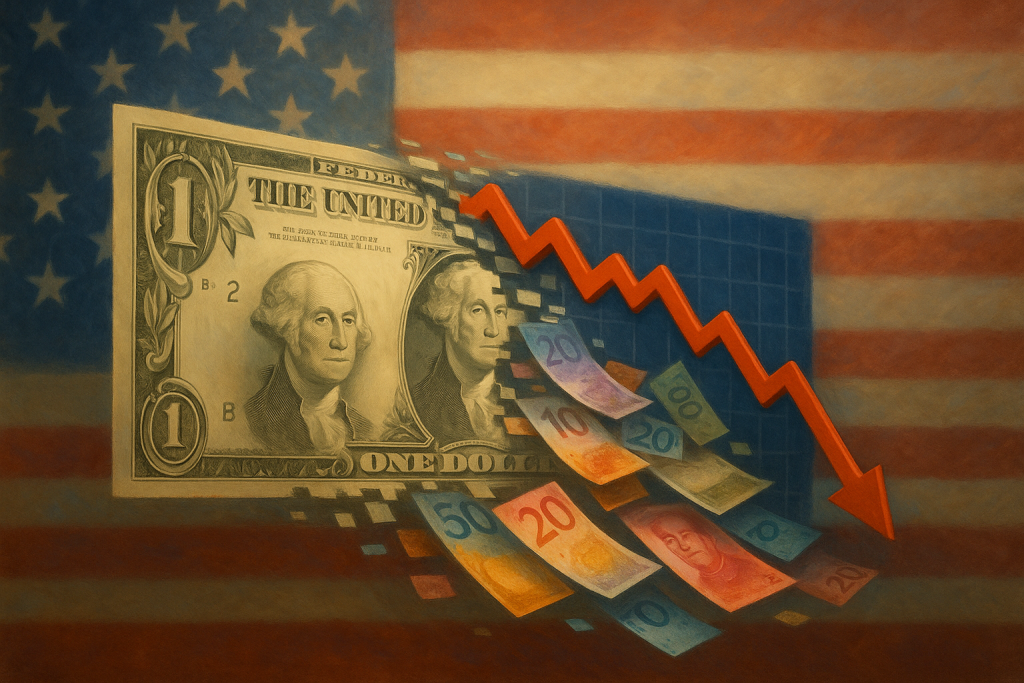In recent years, the concept of de-dollarization has gained significant traction on the global stage, drawing attention to the broader implications for the U.S. economy. This trend, driven by geopolitical, economic, and financial factors, hints at a future where the dominance of the U.S. dollar may face challenges.
The topic has stirred numerous discussions among economists and policy makers about the potential consequences and adaptations required by the United States to retain its economic influence. In this blog post, we delve into the various facets of de-dollarization and explore how it might affect the economic landscape of the United States.
Understanding the push for de-dollarization

Several countries have embarked on the path of de-dollarization to reduce their dependence on the U.S. dollar. This shift is driven by multiple factors, including the desire to mitigate risks associated with fluctuating currency values and geopolitical influences.
As nations strive to safeguard their economic interests and increase monetary sovereignty, reducing reliance on the dollar becomes a strategic goal. Moreover, de-dollarization allows countries to circumvent sanctions imposed by the U.S., thereby increasing their resilience against external pressures.
Developments such as the expansion of China’s Belt and Road Initiative and the creation of the Euro as a competitive global currency have further fueled this trend. Emerging markets seek to avoid the vulnerabilities associated with a dollar-dominated system, particularly in light of the volatility that can arise during economic crises.
Countries engaging in de-dollarization often develop bilateral trade agreements using their national currencies, bypassing the need for dollar transactions entirely. This can reduce transaction costs and exchange rate risks, ultimately benefiting their economies by improving trade terms.
The role of geopolitical conflicts
Geopolitical tensions have played a substantial role in accelerating the de-dollarization trend. Sanctions imposed by the U.S. on countries like Iran, Russia, and Venezuela have prompted these nations to seek ways to minimize their exposure to the dollar.
By fostering trade in native currencies, they aim to insulate their economies from potential repercussions of U.S. foreign policy decisions. A shift from dollar reliance reduces their vulnerability to diplomatic conflicts and helps maintain economic stability in turbulent times.
One noteworthy example is Russia’s strategic move to shift trade with China to rubles and yuan. This not only strengthens Moscow’s economic ties with Beijing but also reduces its reliance on Western financial systems. Similarly, Iran’s decision to trade oil in euros and other currencies is indicative of a long-term strategy to negate the impact of U.S. sanctions.
The ongoing geopolitical realignments raise questions about the U.S.’s leverage in international affairs. As more nations explore de-dollarization options, the challenge for the United States will be to maintain its influence while negotiating new partnerships and trade agreements that recognize diverse monetary systems.
Economic and financial implications for the U.S.
The ripple effects of de-dollarization on the U.S. economy could be multifaceted, affecting areas such as investment, interest rates, and the value of the dollar itself. As countries diversify their reserve holdings away from the dollar, demand for U.S. assets may diminish, potentially limiting the nation’s ability to finance its deficits.
The dollar’s position as a default reserve currency provides significant economic advantages, including lower borrowing costs and stronger economic influence, which could be undermined by persistent de-dollarization efforts.
Moreover, a shift away from the dollar might alter the dynamics of global trade. If more nations choose to settle transactions in alternative currencies, U.S. exporters might face new challenges in price competitiveness.
By embracing innovations in financial technology and exploring new trade alliances, the U.S. can position itself to adapt to these potential shifts in the economic landscape. Wall Street may need to adjust its strategies to thrive in a world where the dollar’s supremacy is no longer a given.
Navigating the future
As the world evolves towards a more diversified financial landscape, the U.S. faces the formidable task of adapting to an environment where the dollar’s preeminence may be contested. This ongoing transformation requires proactive measures from policy makers, financial institutions, and businesses to sustain economic resilience.
Embracing de-dollarization as an opportunity rather than a threat could prove beneficial for the United States. By investing in technologies and systems that support alternative trading currencies, the U.S. can play a pivotal role in shaping the future of international finance.
Building strategic alliances
Forging strategic alliances with emerging economies and traditional allies alike will be critical in navigating the evolving financial world. By engaging in diplomatic efforts and supporting multilateral trade agreements, the U.S. can strengthen its global presence and promote economic collaboration.
Engaging with entities such as the European Union, ASEAN, and the African Union can facilitate dialogue and establish a foundation for mutual growth and cooperation. Efforts to modernize infrastructure, increase investment in education, and foster research and development are vital components of building resilience in a de-dollarized future.





